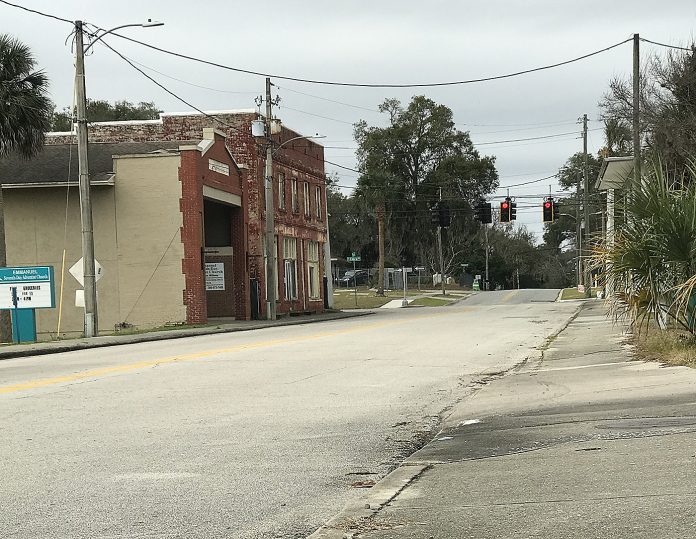Now that the Voorhis Avenue Streetscape Project has grown to a larger scale than originally planned, the Downtown DeLand Community Redevelopment Agency held off on making a decision on the plan to fix up two blocks of West Voorhis Avenue. Instead, the CRA tasked city staff with holding more community meetings and getting more feedback.
Last year, the Voorhis Avenue streetscape was proposed as a potential use for $600,000 in reserve funds the agency had accumulated. Back then, it was suggested that the project could cost in the neighborhood of $500,000. When it was last shown off Nov. 7, the project’s price tag had risen to $2.8 million.
When DeLandites got their first glimpse of the project a majority selected in a community survey on how to spend the funds, they were underwhelmed.
At the time, the city was proposing to fix up just one block of West Voorhis Avenue — between Clara and Florida avenues — of the long-ignored street that was once a bustling hub for DeLand’s Black community.
Since then, the project has ballooned in scope. Now encompassing two blocks, from South Woodland Boulevard to Clara Avenue, the improvements planned for the area shown off at a Nov. 7 meeting included a traffic circle, a raised intersection, larger sidewalks and historical markers.
But those additions carried an increased cost, too. That’s partially because of increases in costs for construction materials, and just about everything else.
“We’ve seen increases between 40- and 50-percent over the last year,” Kurt Luman of CPH engineering firm told the CRA.
Even ardent supporters of sprucing up West Voorhis Avenue urged the city to reconsider the proposed costly project and remember what is most important about the area.
“The idea was to slow traffic east and west on Voorhis, to provide a safer intersection at Florida Avenue, to have safer pedestrian and bicycle improvements, to make the streetscape attractive for economic development such as retail, restaurant or office space and lastly but importantly is to foster historic appreciation for the traditional African American community business area that was here from the 1880s until the 1960s or ’70s,” local business owner and preservationist Mark Shuttleworrth said. “I’m asking, does this streetscape meet these objectives? I don’t think it does.”
Shuttleworth worried that the lack of accommodations for bikes and pedestrians in addition to so much money being spent on decorative road improvements missed the mark.
Recognizing that costs may not come down and community involvement might not increase from the 15-20 residents and stakeholders who come to every meeting, Mayor Bob Apgar said the City Commission — which he won’t be a part of when it comes to making a final decision on the project — may have to just follow its gut and make a decision.
“At some point, I think we’re getting to the point where we need to make some kind of decision on what we’re going to do, because I’m not sure that costs will come down and it’ll get better,” Apgar said. “I think in that process it needs to be made clear that if you want some sort of streetscape and improvements to this area, we need to come to some conclusion on it.”
Apgar and the rest of the Downtown CRA tasked city staff with holding more community meetings to get input on the project.
“With the holidays quickly approaching, staff will do some brainstorming on what method(s) we will look at implementing to garner additional input,” Assistant City Manager Mike Grebosz told The Beacon. “We are going to look into how to incorporate an online aspect as well, which worked fairly well when we did the initial vote to determine the reserve priorities. I do not foresee any input session being scheduled until after the holidays.”
